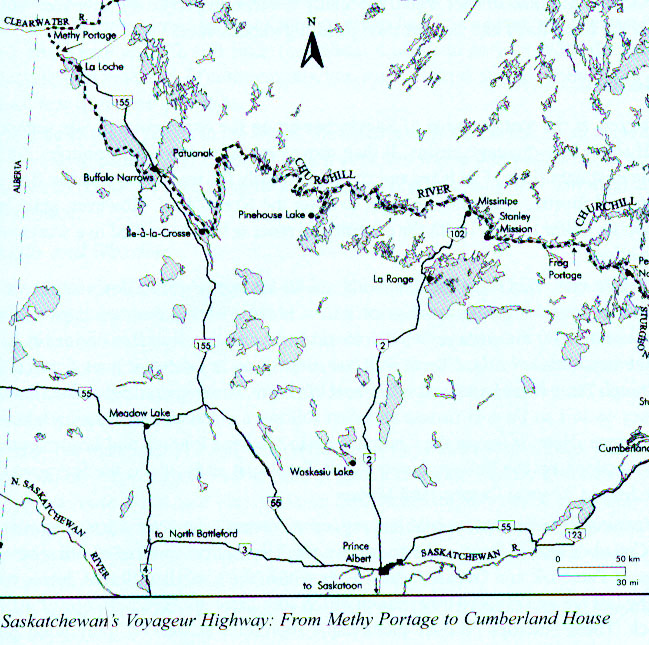
My husband Kees heard about the amazing canoeing at Lac La Ronge. In August of 2003, after two days’ driving from Vancouver, we arrived at Missinipe in Northern Saskatchewan, and rented a comfy retro cabin from Churchill River Outfitters. My husband plotted the trip on the maps he’d bought. He said it looked very straightforward. We could do a round-trip, he thought. Go through several portages to the Churchill River, get to Lac La Ronge, make it back to Missinipe. We planned vaguely.
We left the Ford Ranger at Churchill Outfitters and carried the 17-foot Clipper canoe across the parking lot to Otter Lake. I had my bent-shaft paddle, he had a new set of canoe wheels. We had life jackets, spare paddles, cooking stove, pillows, everything a person would need for self-contained camping. Even matches. “See you in a week,” Kees shouted to the people on shore.
The first few hours were nice. We canoed through Otter Lake, and across the gently-named Grandmother Bay. The first portage at Robertson Falls was short but too rough to use the canoe wheels and we had to make three or four trips to get everything to the other side.
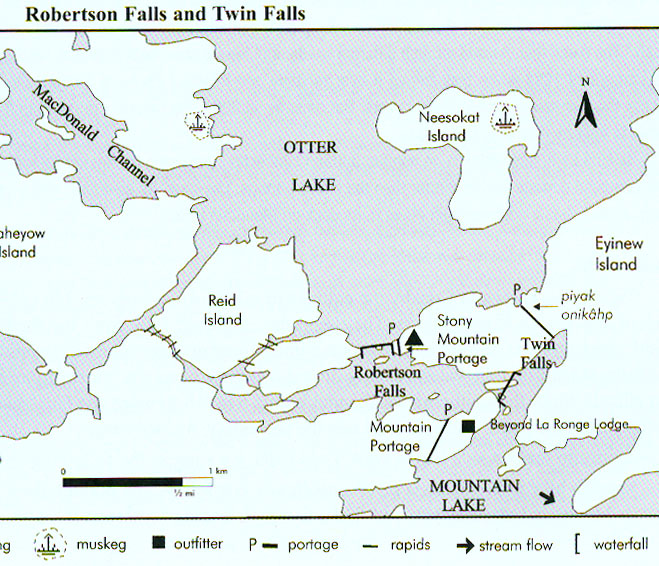
The second portage was new and steep with metal rails but the canoe kept falling off the wheels. A few hundred feet beyond it we found an old portage with wooden tracks.. We dragged the canoe up like draught horses and I slipped in the mud. The portage went over a hill and on the other side was a grassy slope down to the water. We slid down in the canoe and felt giddy as we pushed off into the next set of lakes.
By this time it was about 3 p.m., too early to quit, Kees said. So, back in the canoe we went, slipping by reeds and islands, looking for a passage way to the main lake. Kees steered from the stern, and I provided whatever power I could from the bow. The bent-shaft paddle was the only way I could keep up speed. He gave up around 5 p.m. “I can’t do any more,” he said, and put his paddle down.
“Sure, you can”, I said, and pointed out an island in the far distance. I crab-walked to the stern and he roused himself enough to move to the front. where he paddled a little, and I pointed the canoe to the island. When we got there, he lay flat out on the bedrock. I made beef stroganoff over the one-burner stove in golden afternoon light.
The next day we reached the Churchill River. At Stanley Mission we paddled across the river to Holy Trinity Anglican Church. It was pure white and Gothic made of local timers and imported stained glass from England, and almost 150 years old.
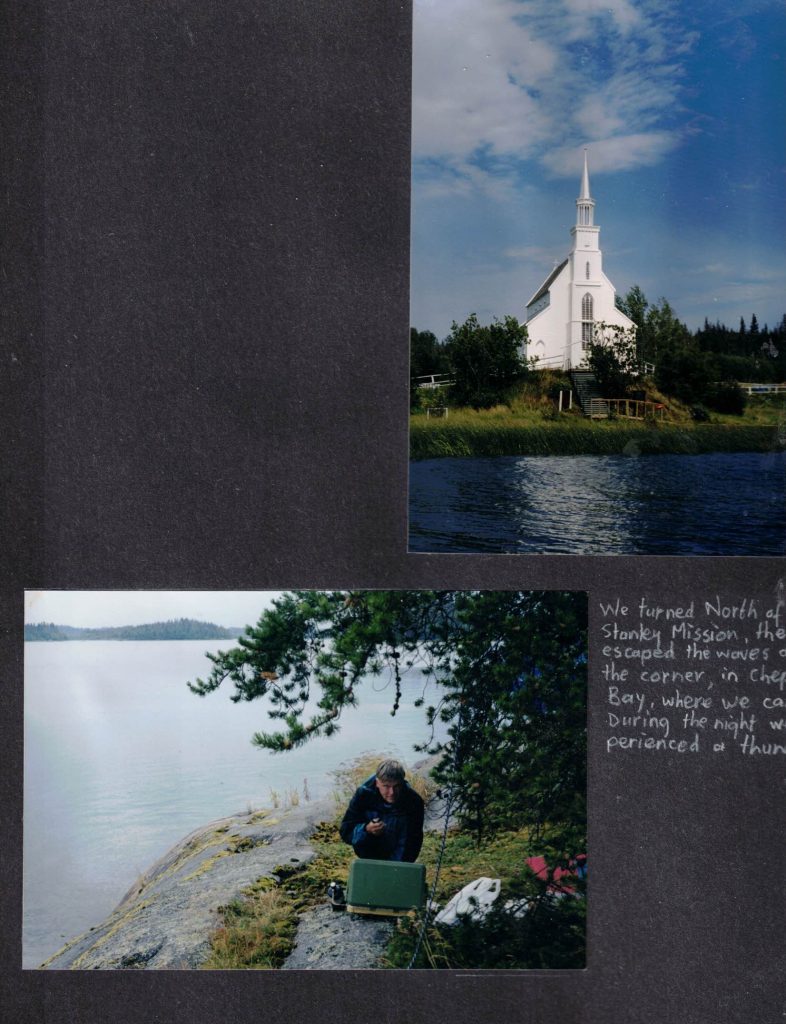
While we were inside, a mighty wind erupted. On the way back across the Churchill River the waves were three-feet high and I was mostly paddling air. If there is a god, she or he saved us from capsizing many times in our battle across the river.
At the Stanley Mission Co-op I phoned our son in BC to wish him a happy birthday. I’d left his number with my several job applications and he said I had a job interview in Kelowna.
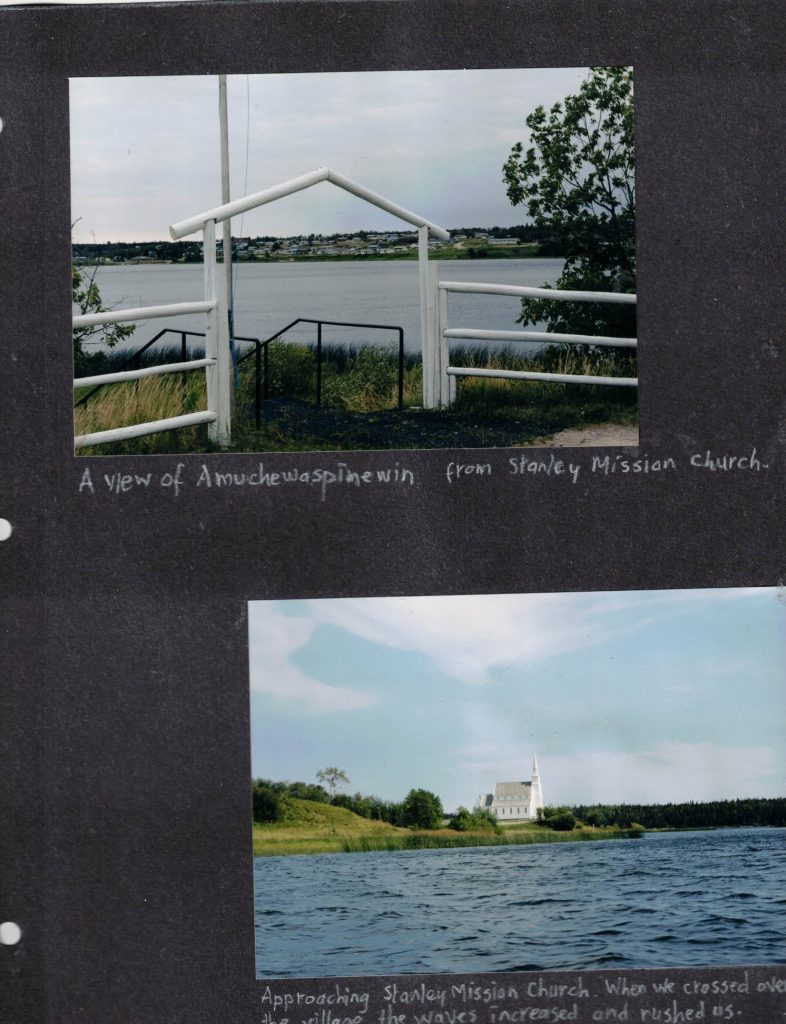
We gave the lake one more chance and decided to camp overnight at a little peninsula where there were said to be petroglyphs. They turned out to be on the far side of the peninsula, a kilometer or so across the water. We had a little campfire on the tip of the peninsula where someone had built an inukshuk. Kees didn’t want to put the tent fly up since he liked to lie in his sleeping bag and look at the stars. The rain started in the middle of the night. A loud cracking thunderstorm trapped us in the tent until 10 a.m. We packed up the canoe and paddled back to Stanley Mission. I phoned Churchill River Outfitters in Missinipe to come and get us. I never told anyone how much it cost. The little café in the Co-op provided Cree pop music for the next two hours til the outfitter arrived.
I thought I had some photos of the interior of Holy Trinity Mission at Stanley Mission but so far I haven’t found them. I might have gotten Stanley Mission confused with the Church of the Two Thieves at Skookumchuck.
My husband always kept up a photo album, and a few pages in it give his version of the trip.
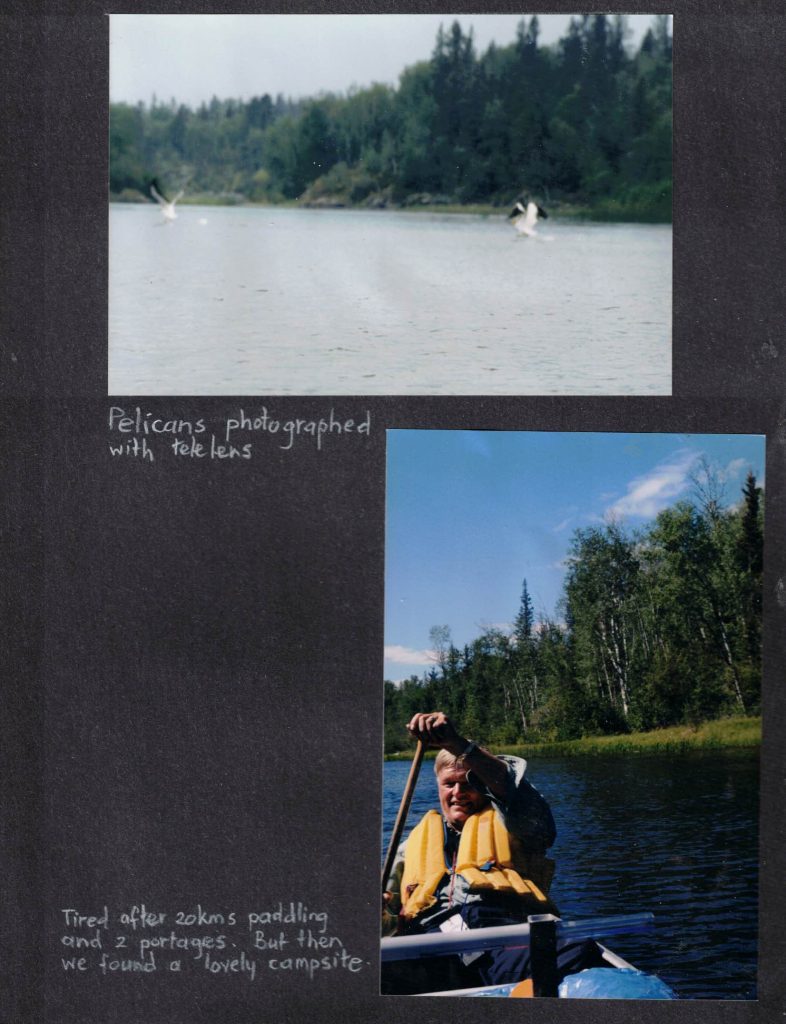
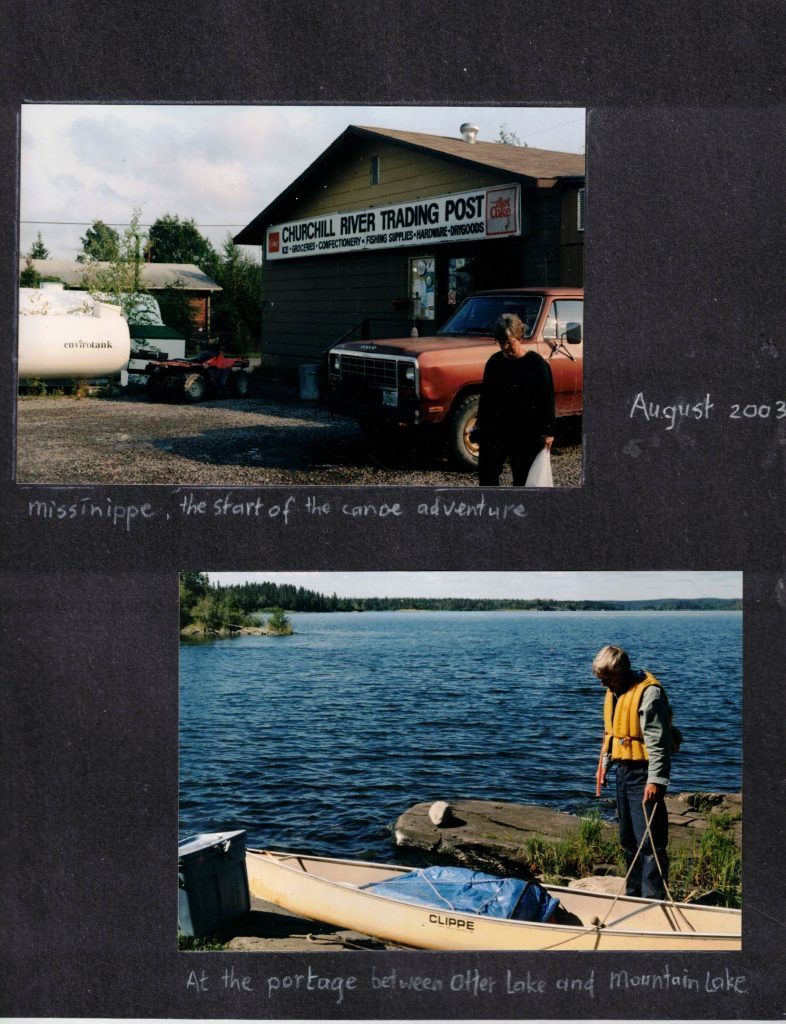

Thanks for sharing this trip.